Interview
with Mike MacIntosh
Supervisor, Queen Elizabeth District Parks and Wildlife (including Lost Lagoon)
For The Swans of Stanley Park (SSP), November 16, 2005
| SSP |
Hello Mike. I’m sure you have many anecdotes of your experiences with the swans of Lost Lagoon over the years; are there any you’d like to share with us?
|
| MM |
Freeze-ups of Lost Lagoon: Over the years, we’ve had several freeze-ups, and could count on no end of excitement. Swans will often hunker down on the ice, sometimes just resting, as they wait out the cold spell, conserving body heat (they are well insulated) and energy.
In those early days, I risked my safety – sliding out with a boat or dinghy to reach the swans or even crawling on the ice, only to have them get up and walk away as I arrived to rescue them.
One winter in the ‘70s when the lagoon was completely iced over, we even sent a tractor out to scrape the snow off the ice. It was only part way across the ice when everyone realized that the ‘sinking feeling’ they had was for real – the machine broke through the ice and sank, ending up two thirds submerged! We had to get a crane to pull the tractor out!
Over time, I have learned that unlike, say, a hummingbird that needs constant nourishment, the swans - who are very large - can sustain themselves for some time without the usual nourishment from the lagoon.
Nevertheless, dozens of calls come in from people certain that the swans are in danger, and urging immediate rescue. Remember, swans are genetically designed to endure and survive the cold in much more frigid regions than the West Coast. And the cold period here lasts only for a brief while.
Ice on the Lagoon (Dec 17. 2005)
Overcrowding: When we had the 70+ swans (including cygnets) on the lagoon in the 1970s, we had zoo-keepers and security staff to patrol the lagoon, and it got pretty hectic, trying to keep the swans from injuring and killing each other as they constantly fought for food, mates and territory.
We actually had cases of aggressive swans injuring people, mostly with their wings – a blow from a swan’s wing can be very painful. Swans are even capable of breaking an arm. The current swans in the lagoon are ‘way more docile.
|
| SSP |
Mike, I understand you actually saved some swans from destruction a few years ago. Can you tell us about that?
|
| MM |
Yes, that would have been about 5 years ago. The Canadian Wildlife Services (CWS) is always concerned with the potential for an introduced species such as mute swans (Eurasian origins) interbreeding with native species such as the Tundra/Whistler or Trumpeter swan. The CWS planned to remove the mute swans that had colonized at the Fraser River, which meant either destroying them or finding them a home. At that time, they contacted me, asking if I’d be interested in taking them – the condition being that they would be pinioned. As we needed “new blood” at the Lagoon (to increase the gene pool), I accepted: Pinioning was done, and the swans introduced to Lost Lagoon.
|
| SSP |
Why would inbreeding be bad?
|
| MM |
The Canadian wildlife Service would probably be best to address this question, but it’s pretty clear that the development of cross-breeds could create problems: Sometimes hybrids, which are generally stronger and breed more frequently, can become very aggressive and supplant the existing native species in their habitat. It upsets the ecological balance. We have not seen much hybridization among swans so far and this is good. By comparison, there is much hybridization among Mallard ducks.
|
| SSP |
I believe you were involved in the building of the islands in Lost Lagoon (West side) …..
|
| MM |
Yes, I was involved in the construction of the permanent islands; this was part of a student work initiative around 1973. It was hoped the swans would use these islands as nesting sites, and although it was never a choice area for them, they did use the islands for nesting in the beginning because there were so many swans at the Lagoon and nesting sites were rare. But the swans moved to other areas later on as their population decreased.
|
|
|
|
|
In this picture are two of the islands that Mike is referring to: The mass of green vegetation on the left is an island as is the small round green mass to the right, mirrored in the water.
|
|
| SSP |
When did you first start working with the Parks Department?
|
| MM |
I began at Stanley Park in the early 70s, first working at the Children’s Farmyard, and was later Assistant Manager for the Zoo.
|
| SSP |
How have things changed since you were first here?
|
| MM |
Overcrowding: In the ‘60s and ‘70s there was an artificially large population of mute swans - an introduced species - at the Lagoon: over 70 swans and cygnets at any given time. The Parks Board of that day encouraged having a great many swans.
Now, the emphasis is on space requirements – here’s an example: the space recommended for a single pair of trumpeter swans for breeding and nesting is one thousand acres – that’s the entire area of Stanley Park! It’s much better for the swans to have more space than to live in an overcrowded environment where they constantly have to fight for food, mates and nesting sites.
Less control: The problems of the Lagoon are much the same as before, but with the growing urban population of Vancouver and less provision for security and predator control, the area is not as secure as it was back then. The swans have to live as semi-wild birds without the protection they once had. For example, people bring their dogs to the Lagoon and loose dogs are a major threat to the swans. People sometimes also interfere with the swans.
|
| SSP |
Is it harder to cope now than previously?
|
| MM |
No, not really. The swans pretty well fend for themselves.
Feeding: Ziggy Jones, our Wildlife Technician, monitors the swans and supplements with limited feeding.
Although we also feed the other birds on a limited basis, it’s important to know that overfeeding in the lagoon can alter the path of migratory birds as they are attracted by the food and their flight is interrupted, if not stopped entirely. Many years ago, we used to throw tons of wheat in the Lagoon for the fowl but that had the negative result of discouraging them from leaving the Lagoon in due course to pursue their migratory flights.
Reduction in number of swans: The fact that there are fewer swans now (compared to the sixties and seventies) is an improvement because they now have more territory.
|
| SSP |
Do you have special concerns?
|
|
Safety and security are always an issue, with so many competing interests such as dogs, predators, etc.
Few swans: Because there are now few swans, another point is the decline in numbers and breeding opportunities. Genetics are important, and “new blood” is needed from time to time.
Nesting: The biggest problems normally arise during the mating and nesting season (conflicts for mate selection and nest sites), the incubation of eggs – the need to protect from both predators and people, because the Lagoon is unsupervised for a large portion of the day.
Nutrition is not a problem because the Lagoon provides most of their food.
|
|
| SSP |
We wondered if it would be possible to add a little protection at nesting time by having the mesh extended over the top of the nests as well as in front?
|
| MM |
That’s a difficult one to answer… There’s a limited amount you can do to ensure their safety. They have the option of building their nests in the more secluded areas; in the event they build by the road or in another dangerous spot, those nests are moved by Ziggy to a better location.
It’s best to leave them on their own. Ziggy keeps an eye out, but it’s really up to the swans to choose places not exposed to as much risk. Again, in general, our philosophy is to leave them alone: If they succeed, it is good. If they don't, there is always next year…
|
| SSP |
Do you have any advice for those people who manage pinioned swans?
|
| MM |
Basically what we try to do here is to provide the swans with opportunities for living as naturally as possible: fresh water, opportunities for breeding, available food sources, in addition to a safe and secure environment.
|
| SSP |
What is your vision for the future of Lost Lagoon?
|
| MM |
Wetlands: I would like to see the continuation of what has already been started, such as the Wetlands created in the north corner of the lagoon (near the causeway) that has native vegetation.
It’s important to encourage the use of the area by diverse species of wildlife, and we’ve already seen species re-introduced that had been missing before: songbirds and waterfowl such as the hooded merganser, as well as muskrat, river otter and even beaver
The Wetlands act as a filter and is important in ensuring water purity and provides protection of the natural habitat.
|
|
|
|
|
This looks toward the North of the Lagoon ( the highway crosses Stanley Park behind the fountain). The Wetlands are located between the fountain and the left of the picture.
|
|
|
Signage: We need to continue adding informational signage; these educate and enhance people’s enjoyment of the environment.
Education: An important part of our mandate is teaching and giving people a sense of appreciation of what they have, because people tend to take care of what they like.
Security is always an issue – no matter what you do in a large city like Vancouver, you’re basically relying on people taking responsibility for their actions.
|
|
| SSP |
We’ve been hearing stories of birds infected with the avian ‘flu virus in countries of eastern Europe, and wonder if it’s a concern to you at this time?
|
| MM |
Not at the moment. For one thing, wild birds’ immune systems are much stronger than domestically-raised species or genetically altered commercial poultry.
There is a strain of the H5 virus that’s been identified in a number of birds in Canada, and actually it’s fairly common – it doesn’t kill; their immune system protects them.
The problem has been in commercially raised poultry, and the virus is probably more deadly in the case of genetically-altered species, and the way in which commercial poultry are raised lowers their immunity to such a virus.
At the moment I think that the risk to people from the birds of Lost Lagoon is minimal.
|
| SSP |
What would you like to tell people who visit our website?
|
| MM |
That the swans are not dependent on humans for survival. The very best way to make the most of a visit is to enjoy them from a distance, appreciate them, but leave them alone. Even in the winter. |
|
|
Photos courtesy of Fiona Sinclair
- NEW: Swans building nest in inappropriate area by: Victoria
- NEW: Grieving behaviour after chased cygnet is killed? by: Maxine
- NEW: Re: Swan flight by: The Regal Swan
- NEW: Grieving behaviour after chased cygnet is killed? by: Maxine
- Wild swans at Lost Lagoon? by: Miki and Fiona
- Fiona and the swans by: Message from Karen
- Royal swan fight by: Just trying to kill each other!
- Fiona and the swans by: Message from Karen
- We’re Walking on Air! by: Fiona
- "Attempted Murder" by: Jørgen Bjerring

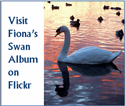
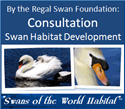
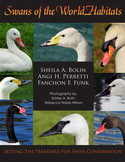





 I have just been in Vancouver for a couple of days and just prior to leaving I took a 5 mile stroll around Stanley Park culminating at Lost Lagoon. There I saw Fiona feeding the swans and I have to..
I have just been in Vancouver for a couple of days and just prior to leaving I took a 5 mile stroll around Stanley Park culminating at Lost Lagoon. There I saw Fiona feeding the swans and I have to..
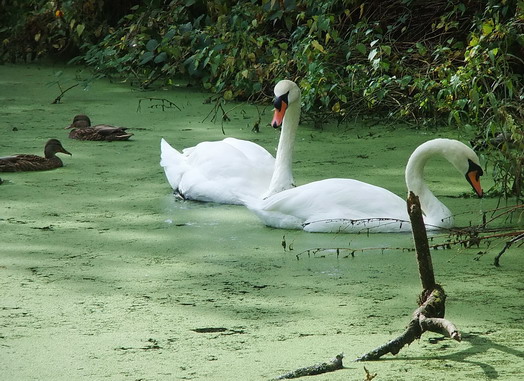 Having just returned home from a trip to see our former Lost Lagoon swans Tristan, Marika and Bijan in their new location, our happiness cannot be measured. We already knew they were in an ideal..
Having just returned home from a trip to see our former Lost Lagoon swans Tristan, Marika and Bijan in their new location, our happiness cannot be measured. We already knew they were in an ideal..
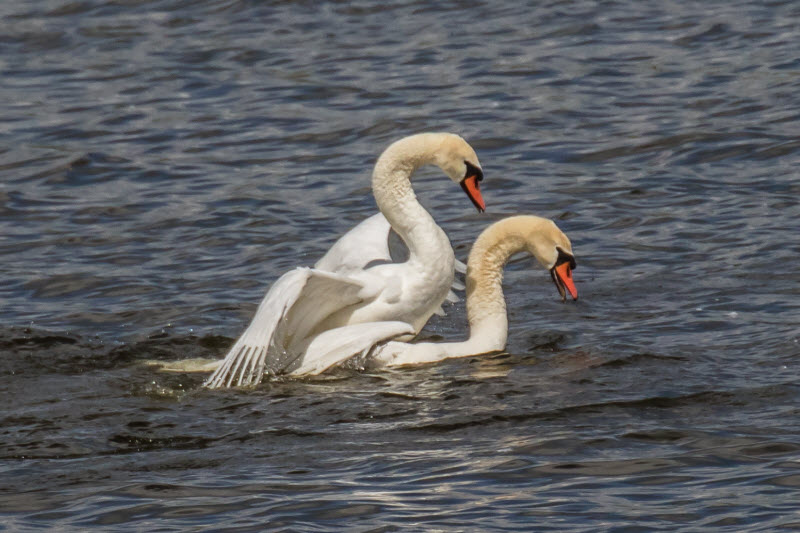 Yeasterday - May 22 - I saw two Mute Swans in close contact. During the foreplay the biting was not very aggressive and after a couple of minutes it could look like a mating. But after 15 seconds the..
Yeasterday - May 22 - I saw two Mute Swans in close contact. During the foreplay the biting was not very aggressive and after a couple of minutes it could look like a mating. But after 15 seconds the..
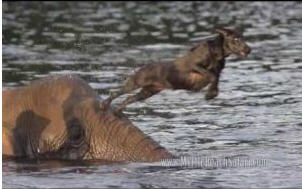 The relationship of Bubbles and Bella developed because of their shared love of the water. The pursuit of "aquatic antics" instilled a strong bond between these unlikely pals. Watermark on..
The relationship of Bubbles and Bella developed because of their shared love of the water. The pursuit of "aquatic antics" instilled a strong bond between these unlikely pals. Watermark on..

